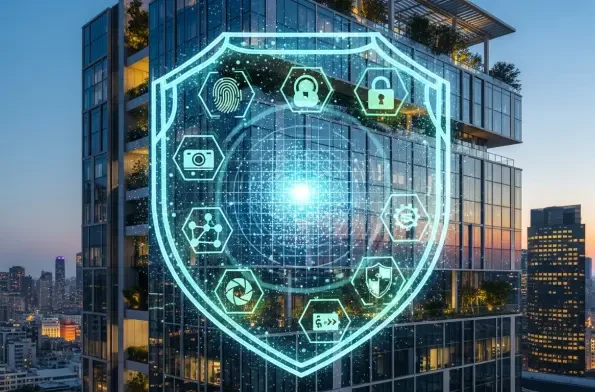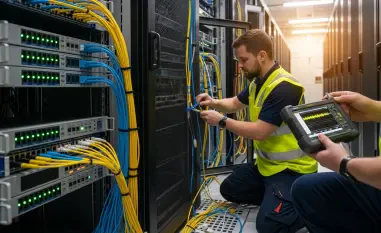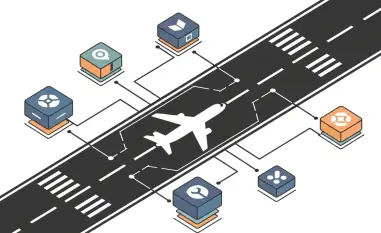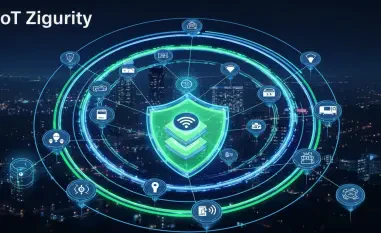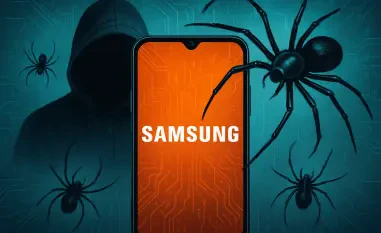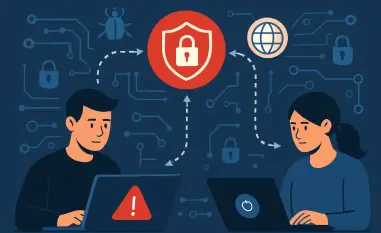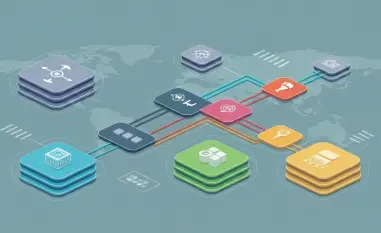The Rise of Smart Buildings in Connected Real Estate
Imagine a world where buildings not only house occupants but also think for them, adjusting lighting, temperature, and security with seamless precision to create environments that adapt to user needs. This is the reality of smart buildings, a rapidly growing sector within real estate and infrastructure investment. These structures, equipped with cutting-edge technologies, are transforming the landscape of property management by integrating systems that communicate and operate autonomously, offering unprecedented control and efficiency.
At the heart of connected buildings lies a network of advanced tools such as Internet of Things (IoT) devices, building management systems, and automation platforms. These technologies enable real-time monitoring and control of everything from energy usage to access security, creating environments that adapt to the needs of their users. The scope extends beyond individual buildings to entire smart campuses, where interconnected systems optimize operations across multiple facilities.
The significance of smart buildings cannot be overstated, as they drive operational efficiency, reduce environmental impact through energy-saving measures, and enhance tenant experiences with personalized services. Key market players, including property owners, operators, and investors, are increasingly drawn to this sector due to its potential for high returns and sustainability benefits. The rising interest in smart infrastructure reflects a broader shift toward technology-driven solutions in urban development, positioning connected real estate as a cornerstone of modern investment strategies.
Opportunities and Trends in Smart Building Technology
Emerging Innovations and Market Drivers
The smart building industry is being reshaped by rapid advancements in technology, particularly in IoT, artificial intelligence (AI), and data analytics. These innovations allow for predictive maintenance, optimized energy consumption, and real-time space management, pushing the boundaries of what buildings can achieve. Such developments are not just enhancements but are becoming essential components for staying competitive in the real estate market.
Tenant expectations are also evolving, with a growing demand for personalized experiences, enhanced safety features, and convenient amenities. Modern occupants expect buildings to cater to their preferences, whether through customizable climate controls or integrated safety protocols. This shift is a significant driver for the adoption of smart technologies, as property managers strive to meet these heightened standards.
For stakeholders, the opportunities are vast, ranging from substantial cost reductions due to efficient resource use to increased property values driven by cutting-edge features. Energy efficiency, in particular, stands out as a major benefit, aligning with global sustainability goals while lowering operational expenses. These factors collectively position smart buildings as attractive assets for long-term investment and development.
Market Growth and Future Projections
Adoption of smart building technologies is accelerating, with industry surveys highlighting a marked increase in implementation across commercial and residential sectors. According to a report by the Royal Institution of Chartered Surveyors, a significant portion of respondents have already experienced cyber incidents, with 27% reporting attacks in a recent 12-month period, underscoring the urgency of robust systems. This data reflects the widespread integration of connected solutions and the corresponding risks that accompany growth.
Looking ahead, market forecasts indicate a strong upward trajectory, with investments in connected real estate expected to surge over the next few years, particularly from 2025 to 2027. Analysts predict that the global push for smarter, more sustainable infrastructure will drive billions in capital toward this sector. Such financial commitment signals confidence in the transformative potential of these technologies.
Smart buildings are poised to become the new standard in property development, as developers and investors recognize their value in meeting modern demands. The shift is not merely a trend but a fundamental change in how real estate is conceptualized, with technology integration becoming a baseline expectation. This evolution suggests a future where traditional buildings may struggle to compete without adopting smart capabilities.
Data Protection and Cyber Security Challenges
The proliferation of data in smart buildings brings with it substantial risks, as these structures collect vast amounts of information, both personal and non-personal. Personal data from occupants, such as access logs and behavioral patterns, alongside non-personal data like energy consumption metrics, are invaluable for optimization but equally attractive to malicious actors. This dual nature of data as both an asset and a liability necessitates stringent protective measures.
Cybersecurity threats loom large, with vulnerabilities arising from unsecured IoT devices, phishing attempts, social engineering tactics, and supply chain weaknesses. Connected devices like smart sensors or even vending machines can serve as entry points for attackers, as demonstrated by incidents where building management systems were breached through seemingly innocuous equipment. These examples highlight the diverse and often underestimated attack surfaces in connected environments.
Mitigating these risks requires a multifaceted approach, including robust technical safeguards such as encryption and network segmentation, alongside comprehensive staff training to counter human-centric threats. Vendor management also plays a critical role, as third-party providers can introduce vulnerabilities if not properly vetted. By implementing these strategies, stakeholders can better shield their assets from the growing sophistication of cyber threats.
Regulatory Landscape and Compliance Requirements
Navigating the regulatory framework for smart buildings involves adhering to stringent data protection laws, particularly in regions like the European Union and the United Kingdom where the General Data Protection Regulation (GDPR) sets high standards for handling personal information. These laws mandate transparency and accountability in data collection, directly impacting how building operators manage occupant information. Compliance is not optional but a legal imperative that shapes operational protocols.
Beyond data protection, cybersecurity regulations are tightening, with frameworks like the EU’s NIS2 Directive imposing requirements on entities in critical sectors such as energy and transport, which often include connected buildings. In the UK, the forthcoming Cyber Security and Resilience Bill is set to align with these standards, emphasizing resilience for critical national infrastructure. A notable provision in this bill is the prohibition of ransom payments, a policy that could affect smart building operators within these sectors.
Ensuring compliance requires proactive measures, such as issuing clear privacy notices, obtaining informed consent, and aligning with the expectations of owners and investors. These steps are essential for maintaining trust and avoiding legal repercussions. As regulations evolve, staying ahead of requirements through regular audits and policy updates becomes a strategic necessity for all involved parties in the smart building ecosystem.
Future Outlook for Smart Buildings and Risk Management
Smart buildings are on track to remain a foundational element of real estate, with emerging technologies like advanced AI and IoT continuing to fuel innovation. These advancements promise even greater efficiency and customization, further embedding smart systems into the fabric of urban development. The trajectory points toward an era where connectivity is not just an add-on but an intrinsic feature of every new construction.
However, this progress is not without potential disruptors, including increasingly sophisticated cyber threats and stricter regulatory landscapes. As attackers develop new methods to exploit vulnerabilities, and as governments impose tougher compliance standards, stakeholders must remain vigilant. These challenges could reshape investment priorities and operational frameworks if not addressed proactively.
Consumer demand for secure, efficient spaces will also play a pivotal role in shaping the future, pushing developers to prioritize both functionality and safety. Alongside this, the importance of risk management strategies, such as securing cyber insurance and conducting regular security assessments, cannot be overstated. These practices will be crucial for safeguarding assets and maintaining market confidence in the face of evolving challenges.
Conclusion and Strategic Recommendations
Reflecting on the insights gathered, it becomes clear that smart buildings represent a transformative force in real estate, balancing remarkable efficiency gains with significant data and cyber risks. This duality underscores every discussion, revealing the intricate challenges that must be navigated by industry players.
To move forward, stakeholders are urged to adopt targeted strategies that address these complexities head-on. Property owners need to allocate resources toward cybersecurity enhancements, ensuring that investments match the scale of potential threats. Operators must enforce rigorous technical safeguards, from encryption to incident response protocols, to protect interconnected systems.
Investors, meanwhile, are encouraged to integrate thorough due diligence into their processes, prioritizing compliance and risk assessment in every deal. These actionable steps, when implemented, promise to fortify the industry against emerging vulnerabilities. Ultimately, the path ahead hinges on a collective commitment to security and innovation, ensuring that the potential of connected real estate is realized without compromising safety.
